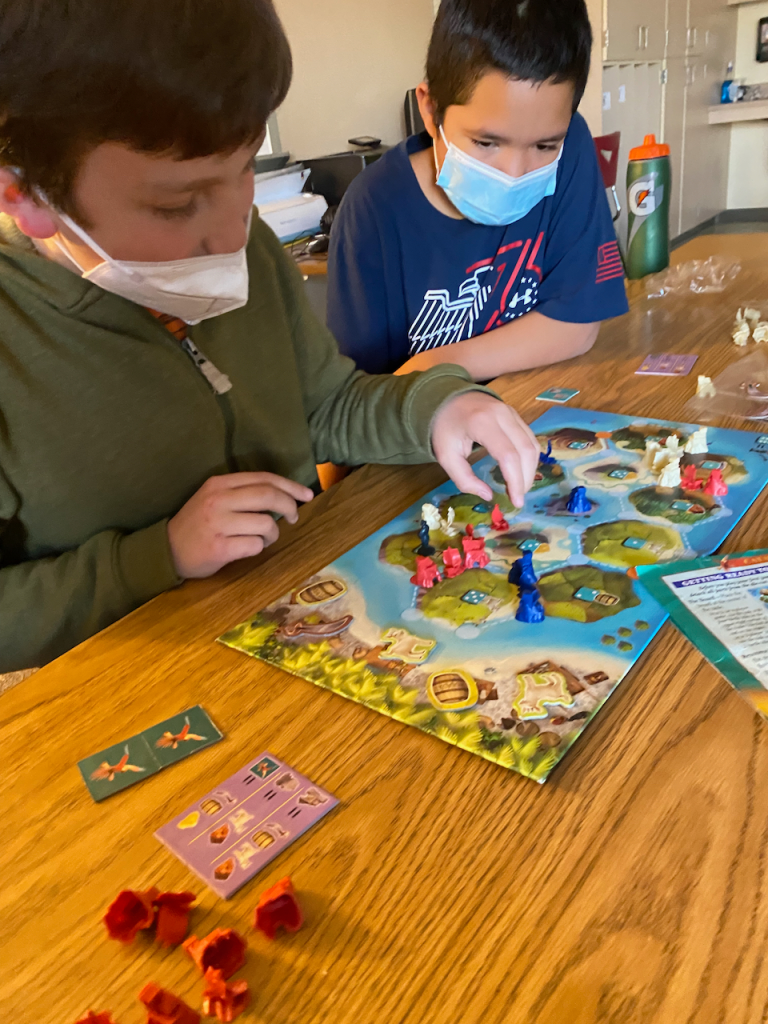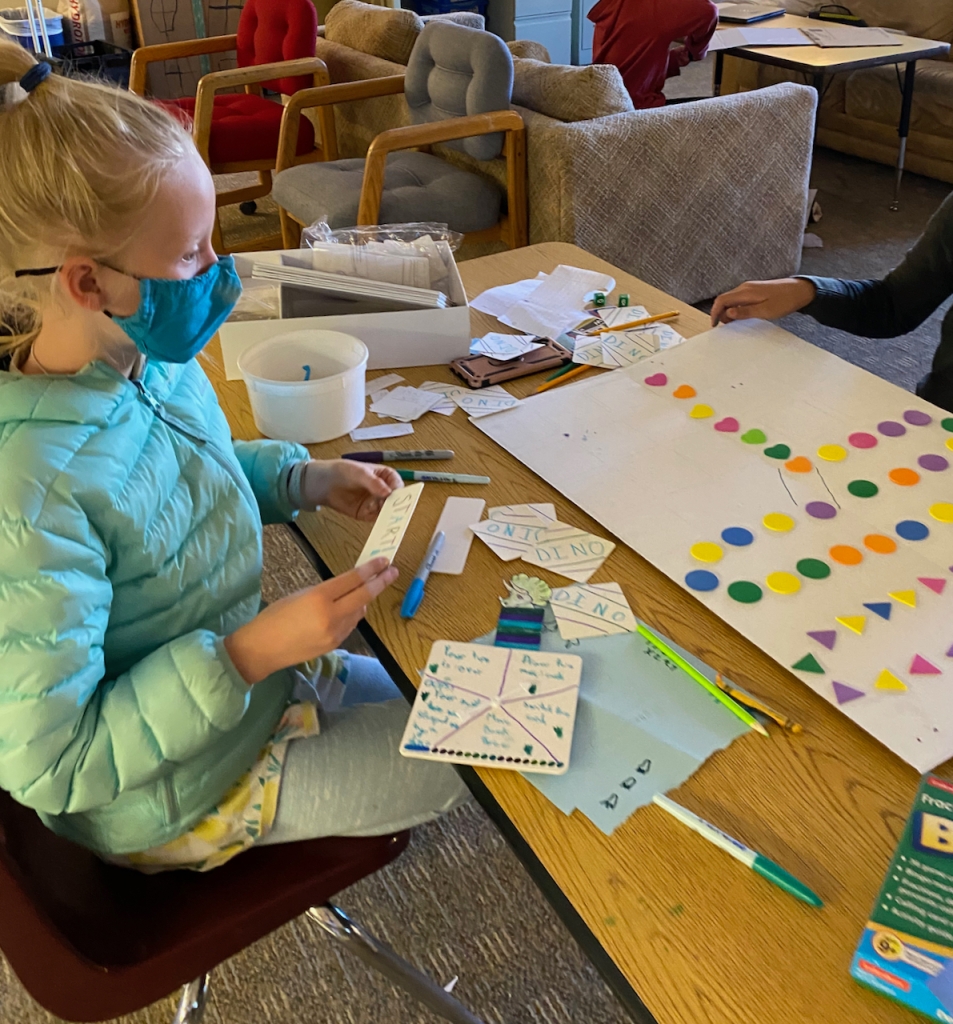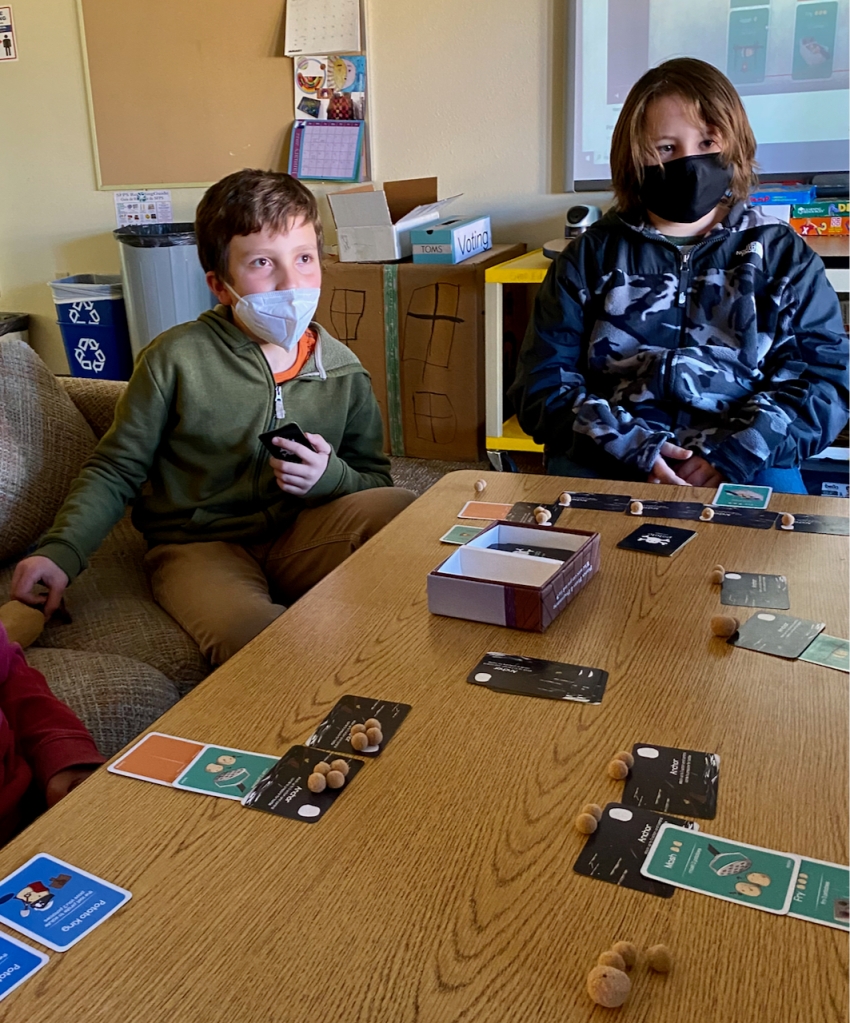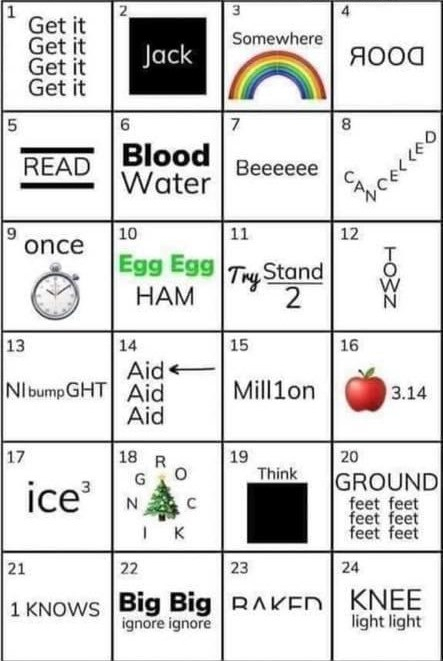Posts Tagged ‘engagement’
All Lessons Should Be Interdisciplinary
I am not a fan of worksheets. In fact, I hate most of them. They don’t teach real world skills. How often does someone do worksheets outside of school? How often when they become adults? They also tend to focus on a single content area concept like specific math problems or questions about a particular text.
I used to teach face-to-face elementary education classes to pre-service teachers. There is evidence that teachers teach the way they were taught. I know that almost everyone has been subjected to worksheets as part of their K-12 (even college) education. It follows, then, that theses new teachers will use worksheets as part of their teaching strategies. I can’t blame them especially if they are not intentionally taught and do not practice other instructional strategies as part of their education.
My instruction with them included a focus on interdisciplinary/cross-curricular, thematic, experiential, and project-based learning. I did very little sage on the stage with them during our classes as I wanted them to directly experience these strategies. They did lots of group discussion, case study analysis, and hands-on activities. I often said to them, “You really don’t have enough time in a day to adequately address all of the individual content areas. It is in both your and your students interest to layer your curriculum with a variety of content area concepts, ideas, and skills that can only occur with more project-based and interdisciplinary lessons. Worksheets won’t do this.”
Multidisciplinary or interdisciplinary learning is a “whole” or “comprehensive” method that covers an idea, topic, or text by integrating multiple knowledge domains. It is a very powerful method of teaching that crosses the boundaries of a discipline or curriculum in order to enhance the scope and depth of learning. Each discipline sheds light on the topic like the facets of a gem.
Imagine being able to teach character development, basic math, and basic science concepts via a classic text. How about basic geography, writing skills, and point of view from that same text? Is it possible to also teach about comprehension, sequence, literal vs. non-literal, imagination, plot, theme, compare and contrast, opinion pieces, vocabulary, friendship, bullying, and critical thinking? The answer is yes, and the genre is legends, myths, and fables (https://www.edutopia.org/blog/a-cornucopia-of-multidisciplinary-teaching-vincent-mastro).
Benefits of Interdisciplinary Learning:
- Obviously, it addresses multiple content areas resulting in increased cognitive development as deeper learning occurs.
- It mimics real life learning rather than isolated educational experiences. It is authentic. When we learn something in the real world, it is interdisciplinary. For example, when learning how to bake or cook something new, one often does research for the best recipes and cooking strategies, reading of recipes and directions, and using math in the actual cooking or baking.
- It helps students increase their critical thinking and problem solving skills. Due to the nature of interdisciplinary learning which often includes the characteristics of deep and project-based learning, students are asked to make their own connections and conclusions about their learning.
- It is student-centric. The focus is on the student rather than on the teacher and on lower levels of Bloom’s taxonomy that often occurs when students are given drill and grill learning activities.
- It tends to be highly engaging for students. They engage because interdisciplinary activities often have at least one content area that is of great interest to the student. It highlights their strengths.
- It opens doors for students to develop interest in content areas in which they have not been typically interested as they see connections between their desirable content areas and other ones.

Some of my blog posts about my interdisciplinary lessons:
- Gingerbread House Making: A Fun and Engaging Cross-Curricular Lesson https://usergeneratededucation.wordpress.com/2018/12/08/gingerbread-house-a-fun-and-engaging-cross-curricular-lesson/
- Day of the Dead (Dia de los Muertos) Displays: A Maker Education Project https://usergeneratededucation.wordpress.com/2018/11/06/day-of-the-dead-dia-de-los-muertos-displays-a-maker-education-project/
- Robot-Enhanced Creative Writing and Storytelling (featuring Ozobot and Wonder’s Dot) https://usergeneratededucation.wordpress.com/2018/05/15/robot-enhanced-creative-writing-and-storytelling-featuring-ozobot-and-wonders-dot/
- Elementary Social Entrepreneurship: A Perfect STEAM Lesson https://usergeneratededucation.wordpress.com/2018/05/13/elementary-social-entrepreneurship-a-perfect-steam-lesson/
Gingerbread House Making: A Fun and Engaging Cross-Curricular Lesson
I believe that educators can be intentional in setting up environments where learners’ propensity to create flourishes. Some elements that can assist with this kind of unbridled making and creating include:
- Open ended projects that promote self-directed differentiation and personalization.
- Choice of projects, methods, materials.
- Some structure but lots of room for a personal touch; lots of room for creativity.
- Educators letting go of expectations what the final project should look like.
- Focus on the processes of learning.
- Focus on the social emotional aspects of learning – collaboration, persistence, acceptance of failure.
- Acceptance of a learner’s projects based on their own criteria of excellence rather than of the educator’s.
- Reflection is built into the process so learners can revisit their projects with a critical eye.

This past week I did a gingerbread house making activity (described below) that included math and language arts connections with my two groups of gifted 3rd through 6th graders. It met all of these criteria and resulted in 100% engagement – lots of fun for the students.
When I talk about making in the classroom with teachers, I often say it takes a lot of preparation time but then the students end up working harder than the teacher during class time – which I believe should always be the case. This activity took quite a bit of preparation plus I ended up spending about $50 out-of-pocket money for the supplies. For me, though, it was worth it as I got to see my students experience such joy and excitement creating their gingerbread houses along with joy in doing the math and language arts activities I built into the lesson.
The Gingerbread House Lesson
List of Activities
As a cross-curricular unit, this lesson addressed standards in language arts, math, science and the arts. The general lesson list of activities included:
- Showing students the story of The Gingerbread Man.
- Asking students to write a story that features a gingerbread house.
- Showing students a video about how to make a simple gingerbread house with graham crackers.
- Asking students to create a blueprint of their gingerbread house including estimates of their perimeters and area. This necessitated me reviewing how to calculate these.
- Having students create their own royal icing from powdered sugar and meringue power – doubling the recipe to include more math calculations.
- Giving students lots of time to make their gingerbread houses.
Standards Addressed
Language Arts Standards
- Write narratives to develop real or imagined experiences or events using effective technique, descriptive details, and clear event sequences.
- Use narrative techniques, such as dialogue, description, and pacing, to develop experiences and events or show the responses of characters to situations.
Math Standard
- Apply the area and perimeter formulas for rectangles in real world and mathematical problems.
Next Generation Science Standard
- Define the criteria and constraints of a design problem with sufficient precision to ensure a successful solution, taking into account relevant scientific principles and potential impacts on people and the natural environment that may limit possible solutions.
Art Standards
- Anchor Standard #1. Generate and conceptualize artistic ideas and work.
- Anchor Standard #2. Organize and develop artistic ideas and work.
- Anchor Standard #3. Refine and complete artistic work.
Social Emotional Learning Standards
- Student demonstrates ability to manage emotions constructively. “I can appropriately handle my feelings.”
- Student demonstrates ability to set and achieve goals. “I can set and achieve goals that will make me more successful.”
Materials
- computers access (to write their stories)
- graph paper
- tape measures
- markers or colored pencils of different colors
- graham crackers ( a lot – I ran short)
- royal icing: confectionary sugar and meringue (see recipe at http://www.inkatrinaskitchen.com/small-batch-royal-icing/)
- electric hand mixer
- gum drops
- pretzels
- candy canes
- skittles or m&m’s
- mini-marshmallows
Activity Details
Write a Story About a Gingerbread House
This part of the lesson was introduced to students by showing them the story of The Gingerbread House to show them what was possible for a creative story.
They then wrote a story about a gingerbread house. I have an Orthodox Jew in one of my classes so I kept it general rather than emphasizing a Christmas theme. Here is an example story:
Creating Blueprints of the Gingerbread Houses with the Perimeter and Area
Students were shown the following video to help them learn techniques for building their gingerbread houses and to get inspired for the type of gingerbread houses they wanted to make.
We then reviewed the formulas for estimating perimeter and area. As part of their blueprints, they included these estimates using one color marker for the perimeter and one for the area. They were given the option to use the squares on the graph paper or to use the tape measures to figure out their perimeter and area.


Making Their Gingerbread Houses
Then came the gingerbread house making time. Students were split into groups of three and provided with the recipe for royal icing which they had to double (more math!) to have enough for the three of them. Also on their respective tables were food items for their gingerbread houses: graham crackers, gum drops, candy canes, skittles, pretzels, mini-marshmallows.
As I mentioned above, there was 100% of engagement by the students as evidenced in these photos.
The only change to this lesson that I would implement when I do it again (and I am definitely doing it again), would be more graham crackers and more time to make them.
2023 Version
The 2023 version included enhancing the gingerbread village with micro:bits, Neopixels, and the Hummingbird kits:
Choice + Imagination = Fantastic Results
Destination Imagination (DI) has been recommended by my supervisor for use with gifted students. I teach gifted students at two Title 1 elementary schools.
DI MISSION
To engage participants in project-based challenges that are designed to build confidence and develop extraordinary creativity, critical thinking, communication, and teamwork skills
DI PRINCIPLES
- Fun learning: Explore STEM/STEAM concepts in a hands-on environment
- Creative problem solving: Learn how to think, not what to think
- Kid powered; team driven: Energize students to own all decisions, creations, and results
- Friendly competition: Motivate teams to reach for the stars, while also rooting for each other
- Global diversity: Encourage and celebrate differences in each other, and differences in ideas.
(https://www.destinationimagination.org/vision-mission/)
Destination Imagination has developed Instant Challenges to help spark student creativity. Recently, I had one class of gifted 6th graders do the Fortune Teller Instant Challenge. See below.

Here is a PDF that leads to the several versions of the Destination Imagination Fortune Teller: Destination_Imagination_IC_Makers PDF
I only have four students in this particular class and interestingly, each selected a different project:
- Tell a Story About Being Very, Very Hungry at a Concert
- Make a Cartoon About Getting a New Pet in a Fishbowl
- Create a Song About Trying to Fly at an Amusement Park
- Create a Commercial About Trying to Fly at an Amusement Park
They (except for the cartoon) recorded their projects in front a green screen and then added background images using iMovie. Here are their finished creations:
They had 100% engagement throughout the project. This is significant as two of the girls sometimes have a difficult time getting and staying focused on their projects during class. I believe this occurred because they were given a choice and they had to use their imaginations.
Choice
I have blogged about giving student voice and choice in the past.
Education works when people have opportunities to find and develop unaccessed or unknown voices and skills. Audre Lorde poignantly describes this “transformation of silence into language and action [as] an act of self-revelation.” Opportunities for flexibility and choice assist learners in finding passion, voice, and revelation through their work. (http://www.edutopia.org/blog/student-choice-leads-to-voice-joshua-block)
Internet accessibility, technologies that permit the user-generated media, and social media allow for unlimited potential for learner choice and voice.
Learner Choice can be facilitated through:
- Giving learners choice in how they want to learn content including through videos, text-based resources, podcasts, hands-on modules, or human interactions (see UDL’s multiple means of representation).
- Giving learners choices to show what they know-what they learned through anything from writing a paper to creating a multimedia presentation to creating a performance art work (see UDL’s multiple means of action and expression).
- Giving learners choice to study topics based on personal interests as it facilitates natural engagement in learning (see Interest Fuels Effortless Engagement).
- Being a tour guide of learning possibilities – show learners the possibilities and then get out of the way (see https://usergeneratededucation.wordpress.com/2015/07/26/show-learners-the-possibilities-and-then-get-out-of-the-way/).
Imagination
I believe that most of student learning should contain some form of them using their imaginations. Sadly, though as Sir Ken Robinson noted over ten years ago, “schools are killing creativity.”
According to research conducted by Kyung Hee Kim, Professor of Education at the College of William and Mary, all aspects of student creativity at the K-12 level have been in significant decline for the last few decades. Based on scores from the Torrance Tests of Creative Thinking, her study reveals “that children have become less emotionally expressive, less energetic, less talkative and verbally expressive, less humorous, less imaginative, less unconventional, less lively and passionate, less perceptive, less apt to connect seemingly irrelevant things, less synthesizing, and less likely to see things from a different angle” (How America’s Education Model Kills Creativity and Entrepreneurship).
From my blog post, Intentional Creativity:
Embedding creativity into the curriculum can and should be a strong component of content area teaching and learning. In other words, educators don’t need to plan to teach creativity as another part of curriculum. Creativity is often an integral part of the practices of professionals including scientists, mathematicians, business people, artists, writers, and is an important part of their content area expertise. It follow, then, that learners should be taught in ways that help them think like a scientist . . . like an artist . . . like a writer . . . like a business person.
BreakoutEDU: A Professional Development Workshop
I recently got the opportunity to offer a professional development workshop for educators of gifted students at the 2018 14th Annual Fall Gifted Education Institute. The description for my workshop was as follows:
BreakoutEDU presents puzzles for students to decipher, each clue leading to another which in turn opens locks attached to a strongbox. BreakoutEdu activities address the unique talents and needs of gifted students in that they require critical thinking, creativity, problem-solving, collaboration, and communication. During this session, directly experience two BreakoutEdu activities: (1) Eggbert, the Slightly Cracked Egg, with a social emotional theme of the benefits of being different, and (2) World of Geometry; and learn about the Breakout Edu resources available to teachers.
Here are the slides from my presentation:
Eggbert: The Slightly Cracked Egg
As an experiential educator, I believe that most learning experiences are best begun with an experiential learning activity (for more about this, see David Kolb’s working on the Experiential Learning Cycle). So I immediately had the workshop participants jump in to do a physical BreakoutEDU game, Eggbert, the Slightly Cracked Egg (see https://usergeneratededucation.wordpress.com/2016/09/04/eggbert-the-slightly-cracked-egg-a-breakout-edu-game/ for a description, set up description, and support materials). I specifically developed this activity for use with gifted students as sometimes they themselves as slightly cracked although I think this book-activity has value for all students – all ages. Here are some photos of the teachers engaged in this activity:
The Reflection
We don’t learn from experience, we learn from reflecting on experience. John Dewey
I then introduced the importance of reflecting on experience (also part of Kolb’s Experiential Learning Theory), and asked the participants to reflect on their Eggbert Breakout Edu by using the BreakoutEdu reflection cards.



Digital BreakoutEDU
After sharing resources offered through Breakoutedu.com (see slide deck about) and for our final activity, I asked them to complete a digital BreakoutEDU activity, Escape from the Dungeon. My purpose for introducing this activity was twofold: (1) to show the teachers that BreakoutEDU games can introduce and reinforce some fairly advanced content concepts – this one has students use geometry concepts and formulas; and (2) to show teachers the use of digital Breakout Edu games where the use of kits aren’t required.


Intentional Creativity
Torrence, whose focus was on creativity, developed the Torrence Incubation Model of Creative Thinking (TIM) model.
As emphasized in this video, embedding creativity into the curriculum can and should be a strong component of content area teaching and learning. In other words, educators don’t need to plan to teach creativity as another part of curriculum. Creativity is often an integral part of the practices of professionals including scientists, mathematicians, business people, artists, writers, and is an important part of their content area expertise. It follow, then, that learners should be taught in ways that help them think like a scientist . . . like an artist . . . like a writer . . . like a business person.
E. Paul Torrance, perhaps one of the most prominent scholars of creativity, conducted a variety of studies exploring the teaching and learning of creativity. His studies identified specific skills associated with creativity, and demonstrated success in the teaching of creativity through the Torrance Incubation Model of Creative Teaching and Learning. The Torrance Incubation Model of Creative Teaching and Learning can be applied to a lesson, unit or project. The application of TIM and the identification of a specific creativity skill is an effective way to teach creativity, without impacting the teaching of core objectives or curriculum content. TIM, has three stages: Stage One, Heighten Anticipation, is designed to adequately and mentally prepare the student (or students) for the project ahead. Torrance describes this as a ʻWarming Up Periodʼ with the following six functions, (1) Create the Desire to Know, (2) Heighten Anticipation and Expectation, (3) Get Attention, (4) Arouse Curiosity, (5) Tickle the Imagination, and (6) Give Purpose and Motivation. (Torrance Incubation Model of Creative Teaching and Learning (TIM))
Specific active methods for heightening anticipation include:
- Using an ice-breaker – examples can be found at http://smartstorming.com/downloads/SmartStorming_25%20Great_Icebreakers.pdf
- Showing an engaging video and then having a discussion about it.
- Telling a story, using comics or humor. (For more about the use of stories, see Storytelling Is Not Lecturing; Lecturing is Not Storytelling).
- Presenting a challenge or problem.
- Using an online tool like Padlet or Flipgrid to propose open-ended questions.
- Doing a non-graded group quiz with a tool such as Kahoot or Quzziz
- Having learners play an analog or video game; or online interactive. For STEM examples, see http://www.pearltrees.com/jackiegerstein/online-stem-interactives/id18098228.
The benefits of educators being intentional with heightening anticipation include:
- Increased engagement in and motivation for the learning activities.
- Increased interest in content area learning; possibly stimulating new learner passions.
- Deeper learning.
- More generalizable skills related to creativity.
So just with a little planning, the educator can set up conditions that can significantly motivate learners and create an energized learning environment climate.



















